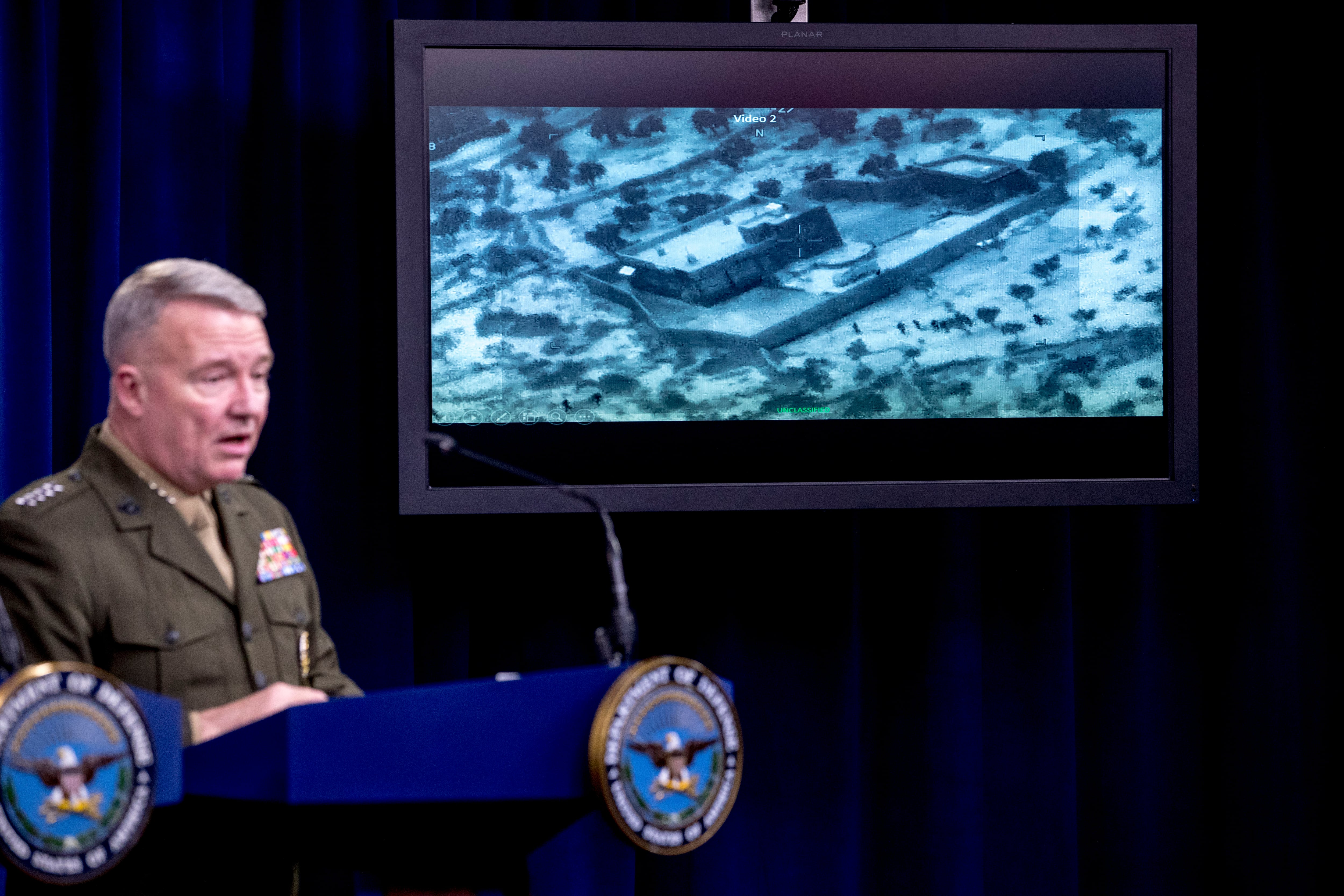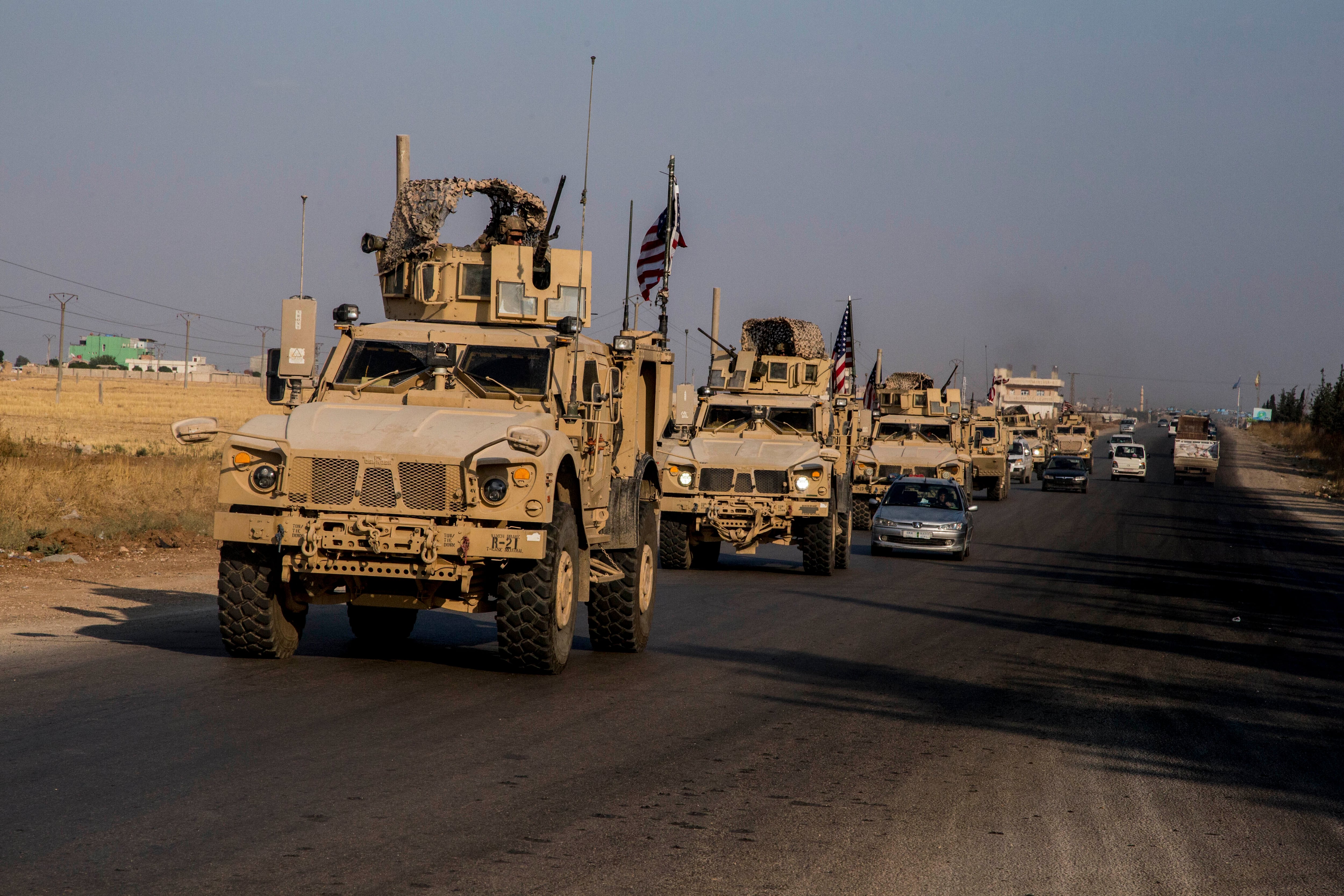Bradley armored vehicles rolled into eastern Syria on a mission to combat ISIS and prevent oil wells from falling back into the hands of the Islamic extremist group, according to an official with Operation Inherent Resolve.
Army Col. Myles B. Caggins III, a spokesman for the U.S.-led mission to defeat ISIS in Iraq and Syria, said the mechanized forces moving into Deir ez-Zor province, Syria, hailed from the 30th Armored Brigade Combat team, a National Guard unit from South Carolina.
NBC News was first to report it, citing OIR commander Army Lt. Gen. Pat White, that Bradleys and Army grunts had crossed into Deir ez-Zor.
Officials with the Pentagon and OIR did not detail the number of troops or armored vehicles tasked with protecting the oil wells in eastern Syria. But Secretary of Defense Mark Esper said Monday that American troops would continue to withdraw from northern Syria.
“We are repositioning" U.S. forces to Deir ez-Zor to continue partnering with the SDF “to defeat ISIS remnants, protect critical infrastructure” and to deny ISIS access to revenue sources. "Mechanized forces provide infantry, maneuver, and firepower,”OIR tweeted Thursday.
Esper said he expected troop levels to be below the 1,000 troops that were deployed to northern Syria prior to President Donald Trump’s decision to withdraw American troops from the country following a Turkish incursion.
Turkey launched operations on Oct. 9 to combat U.S.-backed Kurdish forces. Turkey believes the American anti-ISIS partner force in Syria is a terrorist group.
The decision to redeploy American forces into Syria appears to be reversal by Trump of his much criticized plan to withdraw U.S. troops from the country.
American military veterans who served in armor units have argued mechanized forces in Syria could add logistical and manpower strains for U.S. forces in Syria — countering Trump’s aim to withdraw from the region and end America’s involvement in forever wars.
The oil wells in eastern Syria are a contentious issue. Analysts contend the decision to deploy American armor to safeguard Syrian oil was made due to the threat of Russian and Syrian armor in the region.
How the Bradley will stack up to Russian armor is unknown. The small armor vehicle packs a 25 mm Bushmaster chain gun and is armed with the aging anti-tank missile system known as the TOW. But the Bradley could be highly effective against ISIS up-armored bomb-laden vehicles — a tactic that has grown in prominence among ISIS and Taliban fighters.
The vehicle is also highly maneuverable.
Syrian Democratic Forces, abandoned by their American partners, were forced to invite Russian and Syrian regime forces into towns and cities across northern Syria as Turkish troops and their Free Syrian Army proxy force rolled through the region.
The oil fields in eastern Syria were also the site of a clash between American commandos and Russian mercenaries. In February 2018, U.S. troops called in airstrikes against Russian mercenaries and pro-Syrian regime forces moving towards the American position near the Conoco oil fields in eastern Syria. Nearly 200 enemy troops were killed in the attack.
RELATED

Esper and other U.S. defense officials have oft repeated that the U.S. wants to keep the Syrian oils from falling back into the hands of ISIS. Captured oil wells was a main source of income for ISIS during the height of its power in the Iraq and Syria.
But on Monday, Esper also said Russia and Syria would be denied access to the oil fields. Esper said the U.S. wanted to ensure its SDF partner force could use the oil revenue to fund their fighters and prison camps that are currently holding thousands of ISIS detainees.
Esper told reporters Monday that American forces protecting the oil fields where prepared to use “overwhelming military force” in self defense.
Esper said Monday that he has seen no sign of Syrian or Russian forces challenging U.S. control of the oil fields.
RELATED

The Associated Press, citing a U.S. official, reported that the U.S. has detected what appears to be a massing of Russian and Syrian forces on the western side of the Euphrates River near Deir el-Zour.
Russian officials were contacted by phone, and the U.S. was given assurances that the staged forces would not move east, the official said, speaking on condition of anonymity to discuss a sensitive issue.
Jim Jeffrey, the Trump administration’s special envoy for Syria, seemed to refer to this episode when he said last Friday, “We are currently very concerned about certain developments in the south, in the Deir el-Zour area. I’ve talked to my Russian colleague about that and we’re having other contacts with the Russians concerning that situation. We think it is under control now.”
After expelling Islamic State militants from southeastern Syria in 2018, the Kurds seized control of the more profitable oil fields to the south in Deir el-Zour province.
In addition to that mission, the U.S. will also keep a small number of U.S. troops at the Tanf garrison near the Syria-Iraq border. American commandos housed at Tanf are tasked with training an anti-ISIS force separate from the SDF mission. And there is a Joint Special Operations Command compound in Syria, south of Kobani. where the raid that resulted in the death of ISIS leader Abu Bakr al-Baghdadi was launched.
“All Coalition military operations are de-conflicted with other forces operating in the region, through pre-existing channels and interlocutors in order to reduce the risk of interference, miscalculation, or unintended escalation of military operations,” Caggins said.
The Associated Press contributed to this story
Shawn Snow is the senior reporter for Marine Corps Times and a Marine Corps veteran.





